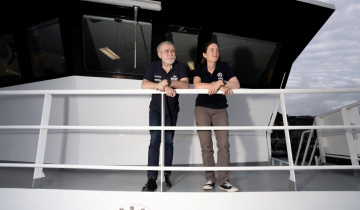What happens to nutrients in estuaries?
What happens to nutrients in estuaries?
Estimated concentrations of dissolved inorganic nitrogen (DIN) (top) and phytoflagellates (phytoplankton, bottom) in the Firth of Thames.
Recent modelling by NIWA scientists is improving our understanding of nutrient cycling in estuaries.
Many estuaries around New Zealand are receiving increased nutrient inputs from their catchments. These nutrients are taken up by phytoplankton, the tiny plants that form the basis of marine food chains and (sometimes) create algal blooms.
NIWA scientists recently estimated the effect of common bottom-dwelling filter-feeders, such as cockles, on nutrient and phytoplankton concentrations in the Firth of Thames. These filter-feeders remove phytoplankton, but their effects are often not included in models of nutrient cycling.
Factoring in the rate at which common filter-feeders remove phytoplankton reduced estimated phytoplankton concentrations in the shallow southern Firth of Thames by 20–80%. NIWA hopes to collect field data to test the validity of these estimates.
‘This modelling study shows that bottom-dwelling filter-feeders can significantly suppress phytoplankton populations in shallow waters. Maintaining adequate populations of these animals may help to reduce the likelihood of algal blooms in shallow estuaries’, says NIWA scientist Dr Niall Broekhuizen.







